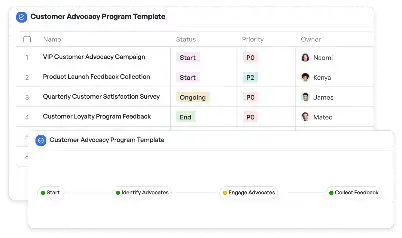Data Labeling Workload Balancing
Achieve project success with the Data Labeling Workload Balancing today!

What is Data Labeling Workload Balancing?
Data Labeling Workload Balancing refers to the strategic distribution of labeling tasks across a team or system to ensure efficiency, accuracy, and timely completion. In the context of machine learning and AI, data labeling is a critical step where raw data is annotated to make it usable for training algorithms. However, the process can be resource-intensive and prone to bottlenecks if not managed properly. By implementing workload balancing, organizations can allocate tasks based on skill levels, availability, and task complexity, ensuring that no single team member or system is overwhelmed. For instance, in a scenario where a company is labeling images for autonomous vehicles, workload balancing ensures that tasks are evenly distributed among annotators, reducing errors and improving overall project timelines.
Try this template now
Who is this Data Labeling Workload Balancing Template for?
This template is designed for project managers, data scientists, and team leads involved in AI and machine learning projects. It is particularly beneficial for organizations that handle large-scale data labeling tasks, such as those in the fields of autonomous driving, healthcare, retail, and natural language processing. Typical roles that would find this template invaluable include data annotation specialists, quality assurance teams, and machine learning engineers. For example, a project manager overseeing a sentiment analysis project can use this template to assign tasks efficiently, ensuring that each team member focuses on their area of expertise while maintaining a balanced workload.

Try this template now
Why use this Data Labeling Workload Balancing?
The primary advantage of using this template lies in its ability to address specific pain points in data labeling projects. One common issue is the uneven distribution of tasks, which can lead to delays and reduced quality. This template provides a structured approach to task allocation, ensuring that workloads are evenly distributed based on team capacity and task complexity. Another challenge is maintaining consistency in labeling guidelines, especially in large teams. The template includes mechanisms for guideline reviews and quality checks, ensuring that all team members adhere to the same standards. Additionally, it helps in tracking progress and identifying bottlenecks early, enabling proactive adjustments. For instance, in a medical image segmentation project, this template can ensure that high-priority tasks are completed first while maintaining overall balance, ultimately leading to more accurate and reliable datasets.

Try this template now
Get Started with the Data Labeling Workload Balancing
Follow these simple steps to get started with Meegle templates:
1. Click 'Get this Free Template Now' to sign up for Meegle.
2. After signing up, you will be redirected to the Data Labeling Workload Balancing. Click 'Use this Template' to create a version of this template in your workspace.
3. Customize the workflow and fields of the template to suit your specific needs.
4. Start using the template and experience the full potential of Meegle!
Try this template now
Free forever for teams up to 20!
The world’s #1 visualized project management tool
Powered by the next gen visual workflow engine




